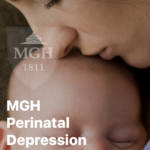The American College of Obstetricians and Gynecologists (ACOG) now recommends screening for perinatal depression and anxiety, stating that “clinicians screen patients at least once during the perinatal period for depression and anxiety symptoms using a standard, validated tool.” Approximately 40 states have instituted guidelines and recommendations regarding screening for perinatal depression; however, we are still gathering information on how successful these recommendations have been in terms identifying and treating women with perinatal depression.
The CDC analyzed data from the 2018 Pregnancy Risk Assessment Monitoring System (PRAMS) in order to assess whether health care providers asked women about depression at obstetric visits during pregnancy and the postpartum period. PRAMS is a surveillance project conducted by the CDC which uses a questionnaire to collect state-specific, population-based data on maternal attitudes and experiences before, during, and shortly after pregnancy. Depressive symptoms were assessed using the Patient Health Questionnaire-2 screening instrument.
Among respondents from 31 states, the prevalence of postpartum depressive symptoms was 13.2%, ranging from 9.7% in Illinois to 23.5% in Mississippi. The prevalence of postpartum depressive symptoms exceeded 20% in several groups of women: those aged ? 19 years of age, American Indian/Alaska Native women, those who smoked during or after pregnancy, women who had experienced intimate partner violence before or during pregnancy, and women who had an infant die since birth.
There were considerable differences across sites in the prevalence of screening for perinatal depression. The overall prevalence of women reporting that a healthcare provider inquired about depression during pregnancy was 79.1% overall, ranging from 51.3% in Puerto Rico to 90.7% in Alaska. The prevalence of women reporting that a provider asked about postpartum depression was 87.4% overall, ranging from 50.7% in Puerto Rico to 96.2% in Vermont.
While some headlines have portrayed this finding in a negative light, we need to keep in mind that this is a huge improvement over what we witnessed prior to the introduction of guidelines for perinatal depression screening. For example, Kaiser Permanente system in Northern California launched a program to improve the identification of women with perinatal depression. The implementation of this screening program led to a significant increase in the percentage of pregnant women screened. In the pre-implementation phase, less than 1% of the women were screened. After the program was fully implemented, 98% of the women were screened.
Screening for perinatal mood and anxiety disorders is an important element of obstetric care, but screening is only the first step. While we have shown that we can improve rates of screening using various methods, we must make sure that screening is seamlessly connected to follow-up and treatment.
The biggest, and perhaps most insurmountable, problem is that we are trying to overcome the inadequacy of mental health services in the United States and a limited number of treaters with expertise in perinatal mood and anxiety disorders. If 15% to 20% of the women screen positive (as noted in this study), they will require additional, more thorough evaluation. And how long will this evaluation take? If you are an obstetrician who sees 20 patients per day, how will you fold in the extra time it needs to evaluate six or seven additional patients? And what if one of those patients is reporting suicidal thoughts or intrusive thoughts about harming her child? How will that be managed in a busy outpatient obstetrics practice?
At the present time, we are trying to fix the inadequacy of our healthcare system by recruiting ancillary providers — for example, using obstetric providers to screen for and manage perinatal depression. Noting that screening alone cannot improve clinical outcomes, the ACOG opinion statement says that clinical staff in the practice “should be prepared to initiate medical therapy, refer patients to appropriate health resources when indicated, or both.”
While there are now more and more programs offering training to obstetricians, midwives, and nurses so that they can better identify, and even manage, perinatal mood and anxiety disorders, I suspect that many obstetric providers may feel uncomfortable assuming the care of this patient population. While screening is important, we must also make sure we tend to the ACOG recommendations regarding appropriate follow-up and treatment. Because the stigma continues to be significant with regard to mental health issues in mothers and mothers-to-be and because there are concerns regarding the use of medication in pregnant and nursing women, we must make sure that after screening, we help women to access appropriate resources and treaters who are familiar with treating women during pregnancy and the postpartum period.
Ruta Nonacs, MD PhD
Vital Signs: Postpartum Depressive Symptoms and Provider Discussions About Perinatal Depression — United States, 2018 (MMWR;May 15, 2020 / 69(19);575–581
Many Clinicians Still Not Asking About Postpartum Depression (Medscape)








Leave A Comment